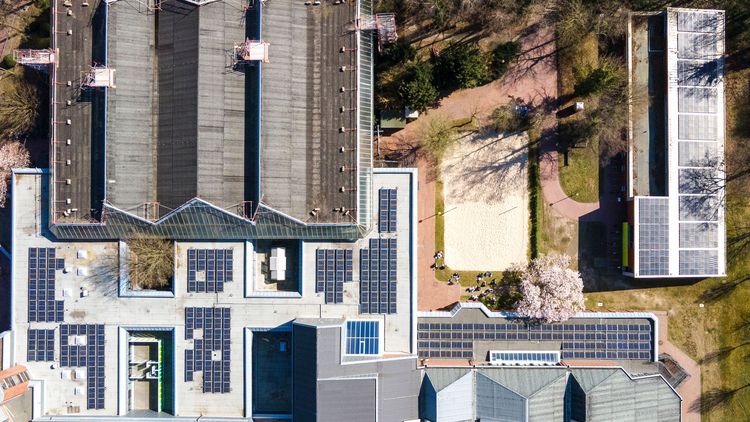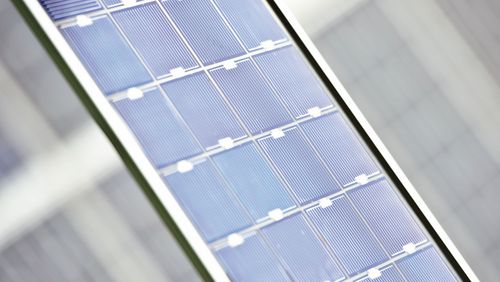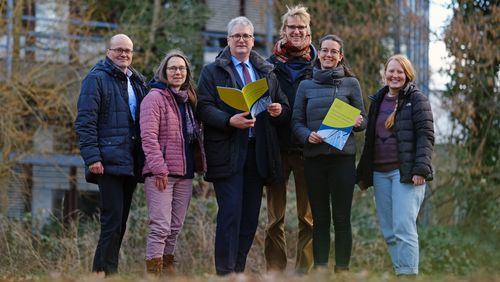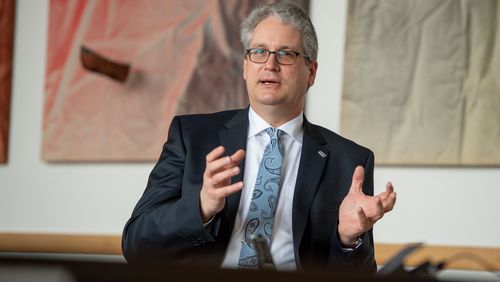The University has set itself the goal of becoming climate neutral. This goal was turned into a project last year. The first milestone has already been reached: the working group Climate Neutral University presented a Greenhouse Gas Balance in spring of this year.
How much electricity does the university consume? How much of the university's total emissions does the canteen produce? Answers to these and other questions can be found in the university's first Greenhouse Gas Balance report, which was compiled in cooperation with an engineering company. Climate Protection Manager Anna Krämer and the Climate Neutral University working group presented the document to the University Senate and at a public university event in March. The Greenhouse Gas Balance shows that the biggest potential for cutting the university’s emissions is in the area of electricity and gas consumption, followed by mobility and then procurement and university catering. The report analysed the data for 2019 and 2020, and therefore includes the first year of the pandemic, which is reflected in strong fluctuations in emissions levels.
Since there are currently no standards for a greenhouse gas balance for universities, the project team decided to use the comprehensive Greenhouse Gas Protocol (GHG), which supplies the world’s most commonly used greenhouse gas accounting standards, to measure the university’s carbon footprint. "Unlike other universities, we apply a very comprehensive inventory of standards that takes account of areas such as procurement and everyday mobility which are often left out. These emissions are then converted into CO2 equivalents," Krämer explains. In addition, the German electricity mix was factored into the calculations. "The balance thus takes account of the combination of energy sources used to generate electricity in Germany. This improves comparability with other surveys," says the sustainability economist.
Emissions data to be collected every two years
The university emitted approximately 21,500 tonnes of carbon dioxide equivalents in greenhouse gases in 2019, and just over 14,500 tonnes in 2020 due to the pandemic. The balance shows that the bulk of the university’s emissions are generated by heat and electricity consumption: in 2019, this accounted for 68 percent of the total emissions, rising to 85 percent in 2020. Business travel and employees travelling to work accounted for almost 29 percent of the greenhouse gas emissions in 2019; in 2020 that figure dropped to around twelve percent. Emissions in the areas of procurement and university catering were comparatively low, in the lower single digit range.
The report points to major potential for reducing emissions in the area of building energy management. One example of an energy-saving measure in this area is the combined heat and power plant on the Wechloy campus, which went into operation in 2020 and runs on natural gas. Krämer describes the plant as a transitional technology on the path to climate neutrality. The university was able to reduce its emissions from electricity consumption by around 3,000 tonnes to a total of 4,800 tonnes of CO2 during the period under review. CO2 emissions from gas consumption rose by about 800 tonnes compared to 2019, but overall the university’s emissions still decreased.
"Our results are based on rough estimates in some areas – everyday mobility, for example. This means that a balance like this can only be an approximation. Nevertheless, it is essential for future climate protection measures," stresses Krämer. From now on, emissions data will be gathered every two years. In May, a mobility survey was also conducted among employees and students to close the data gap.
Open workshops
The project team has set itself the goal of developing an integrated climate protection concept by the end of 2022. It will specify concrete, realistic yet ambitious goals and measures to bring the university ever closer to climate neutrality. Seven workshops were held in June to discuss potential measures. All interested members of the university were invited to take part. The results will be published in the climate protection concept.




